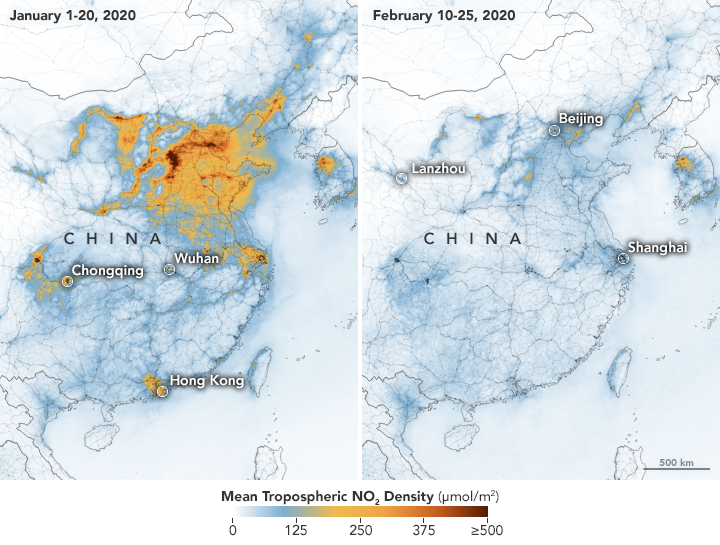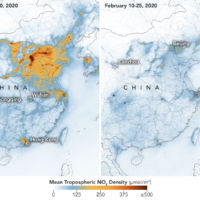China's lockdown measures to minimize further coronavirus infections have created one unexpected benefit — a dramatic improvement to the nation's air quality.
Satellites operated by NASA and the European Space Agency have detected significant drops of major airborne pollutants above vast swaths of the country.
Before-and-after images show how nitrogen dioxide levels plummeted in February compared to pre-lockdown January of this year. Nitrogen dioxide is a noxious gas emitted by factories, motor vehicles and fossil fuel-powered electricity generation stations.
The data were collected by ESA's Sentinel-5 satellite. Ozone measurements from NASA's Aura spacecraft showed similar results.
NASA scientists first detected the decline of pollutants near Wuhan in Hubei province. A food market in the city is believed to be the epicenter of the novel coronavirus outbreak, which has since spread to more than 50 countries.
"This is the first time I have seen such a dramatic drop-off over such a wide area for a specific event," said Fei Liu, an air quality researcher at NASA's Goddard Space Flight Center.
Scientists have previously observed drops in nitrogen dioxide levels during the global financial crisis, and more regionally, during 2008's Beijing Olympics.
Researchers say China's pollutant levels normally decline in February as factories pause for Lunar New Year celebrations, when the world's largest annual mass migration occurs. But the usual rebound in pollutant levels did not occur last month, helping to illustrate the vast scale of shutdowns in the world's second biggest economy.
"This year, the reduction rate is more significant than in past years and it has lasted longer," Liu said. "I am not surprised because many cities nationwide have taken measures to minimize spread of the virus."



















With your current subscription plan you can comment on stories. However, before writing your first comment, please create a display name in the Profile section of your subscriber account page.